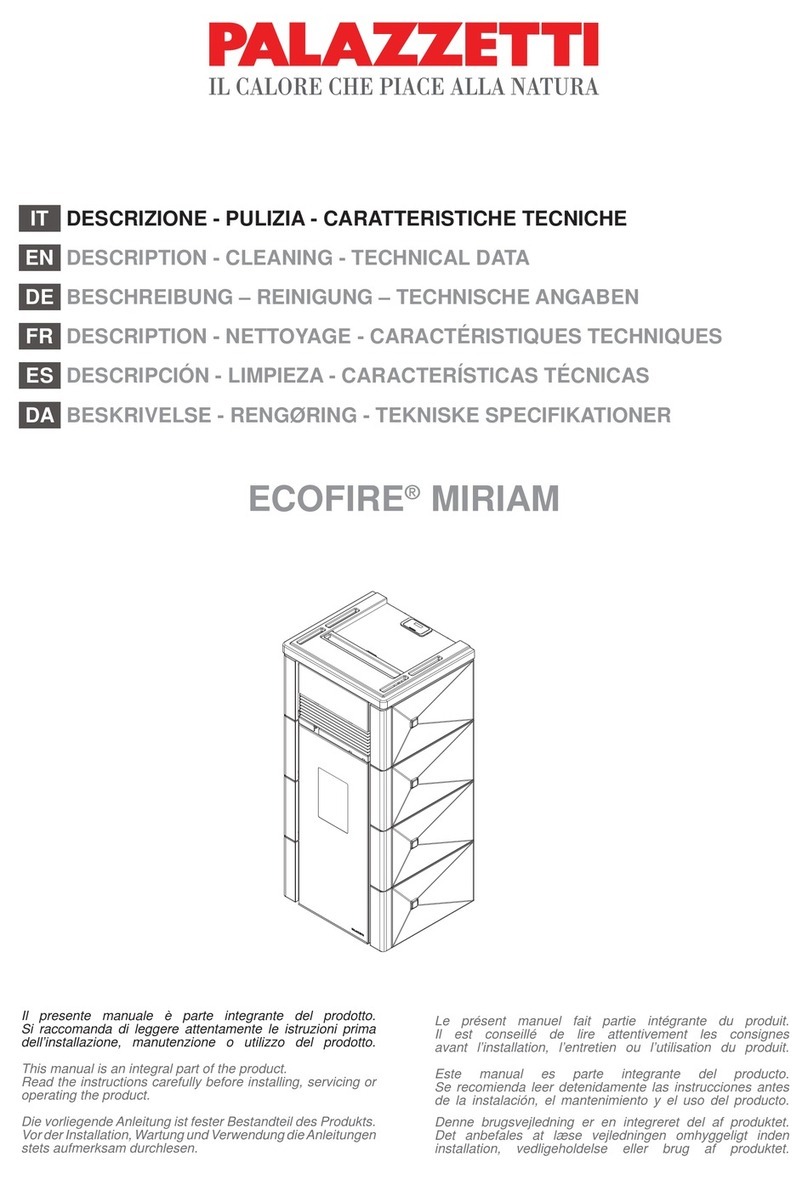
Warnings/Safety Precautions
o Turn off the stove if you smell smoke or can
see smoke coming from the heating
appliance.
Page 4 of 37
o Turning the stove power switch to “Off” will not
turn off power to all electronics within the
stove - if the stove has been burning and is
hot, the exhaust blower will continue to
operate until the stove cools.
o Never unplug the stove to turn it off;
unplugging the stove to shut it down may
permit the stove to seep smoke in your home.
o Unless directed by Buffalo Pellet Stove/
Snyder Manufacturing personnel, never
attempt to repair or replace any parts on the
stove. All repair work done on the appliance
should be completed by a trained pellet stove
technician.
o The burn chamber door, front glass and the
heat exchanger door all become extremely hot
during stove operation, do not touch, severe
burns may result.
o Keep clothing, furniture, and all other
combustibles away from the front of the stove
during operation.
o Closely supervise children when in close
proximity to the stove. Keep children away
from the heating appliance.
o Do not store or use gasoline, lighter fluid,
kerosene or any other flammable vapors or
liquids near the heating appliance during
operation.
o The burn chamber door and ash pan must be
securely closed and latched during stove
operation to ensure proper function of the
heating appliance.
o During operation, if the flame becomes dark
orange, lazy or sooty or if the burn pot begins
to over fill with pellets, immediately turn the
power switch to “Off” and allow the stove to go
through a “Power Off” shut down procedure.
Once the stove burns through the remaining
pellets in the burn pot, completely turns off
(exhaust blower will run for a minimum of 30
mins) and cools, thoroughly clean the stove
following the maintenance procedures
identified in this manual.
o Keep all areas around the stove free of
obstructions to permit free airflow to the
appliance during operation.
o All exhaust piping transferring exhaust gasses
from the appliance to the exterior of your
home must be completely sealed and air tight.
All pellet vent joints must be sealed with RTV
500F silicone sealant.
o All pellet-burning heating appliances require
routine maintenance/cleaning in order to
operate properly. Failure to follow the
maintenance/cleaning schedule identified in
this manual will reduce the efficiency of the
heating appliance, will cause the appliance to
not function properly, may cause premature
failure of components and in extreme cases
may void the warranty on the appliance.
o Allow the appliance to cool entirely before
doing any routine maintenance/cleaning on
the stove.
o This pellet stove is designed, tested and
approved to only burn wood pellets at this
time. Burning any other type of medium will
void the warranty and Warnock Hersey safety
listing.
o This pellet-burning appliance will not operate
during a power outage. If power within your
home is intermittent, turn the power switch on
the stove to the “Off” position and leave the
stove powered down until uninterrupted power
to the appliance is restored (power down
threatening condition has passed).
o Pellet stove must be connected to a standard
115V, 60Hz., grounded electrical outlet.
Power to the heating appliance must not be
provided through a ground fault interrupt (GFI)
circuit.
o Exhaust piping must be checked once every
ton-and-a-half of pellets burned to inspect for
and to clean any accumulation of soot and/or
creosote that has accumulated within the
exhaust system. Failure to follow this exhaust
system inspection/cleaning schedule may
result in adverse and potentially dangerous
stove operation conditions.
o Never put your hands or fingers near the
auger (located on the inside bottom sloped
surface of the hopper). A high torque motor
drives the auger which is capable of inflicting
harm to fingers placed in close proximity to
the auger. The auger is driven by software,
based on the set temperature of the stove and
the detected room temperature the auger can
turn on and off at any time



























